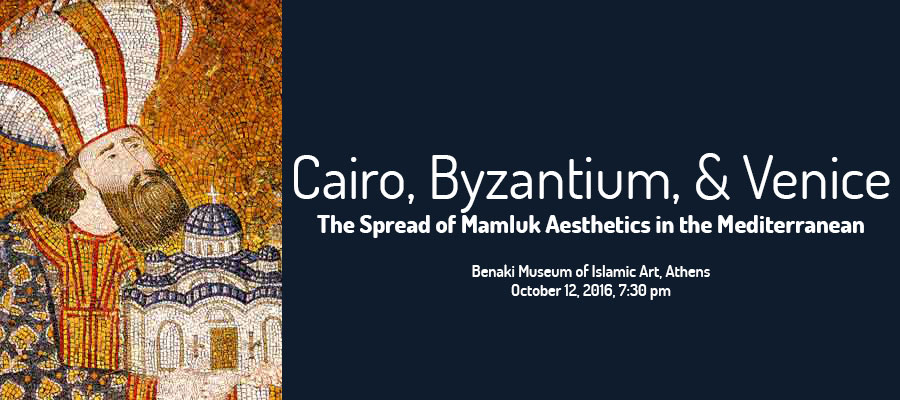Cairo, Byzantium, & Venice. The Spread of Mamluk Aesthetics in the Mediterranean through the Example of the Headgear, lecture by Dimitris Loupis (Harvard University), Benaki Museum of Islamic Art, Athens, October 12, 2016, 7:30 pm
Slave soldiers of modest social background the later on members of Mamluk aristocracy (1250-1517) attached great importance to their public appearances during ceremonies, as if they were looking to enhance the legitimacy of rule over their subjects by inciting with every opportunity admiration for their spectacular attire and the elaborate extravagant headgears. The image of the Mamluks became synonymous with both luxury and power, and soon was transformed into an exportable symbol from Cairo to the Mediterranean world with resonance and vivid reception by the Byzantine world and the Republic of Venice.
Painters of the Venetian school, such as Gentile Bellini, Vittore Carpaccio, and Giovanni Mansueti splendidly represented with their own artistic idiom that capacity of Mamluk image in works depicting scenes of public life with crowds of people. Byzantine Constantinople neither fell short of the level of reception and adaptation of those costume trends nor limited it to the known example of Theodoros Metochitis, third founder of Chora Monastery. This lecture explores the Byzantine version of reception of Mamluk costume aesthetics with a focus on the headgear, as it is depicted in Byzantine painting. Certainly Mamluk splendor, as part of the radiance of Islamic culture, and its Byzantine iridescence is not limited in costume and material culture. It is a deeper phenomenon, which needs more light.
Dimitris Loupis studied Philosophy at the National University in Athens, received an MA degree in Ottoman History at Bilkent University in Ankara, and an MA degree in the History of Islamic Middle East at Harvard University in Boston, where he completes his doctoral dissertation. He is a research fellow at the Institute of Historical Research in the National Hellenic Research Foundation in Athens. He has published on Ottoman cartography and travel literature, for example on Piri Reis, the meticulous mapmaker of 16th century, as well as Evliya Çelebi, the idiosyncratic traveler of 17th century.
